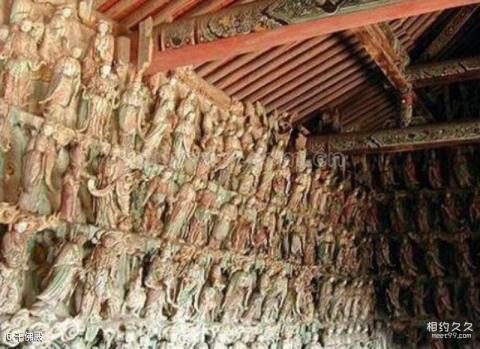
Introduction to the Thousand Buddhas Hall: The statue of Wei Tuo, located in the Thousand Buddhas Hall, is a masterpiece of similar themes and best reflects the sculpture level of ancient artists. The entire shape of the "Weituo" image, especially the waist, is very exaggerated, reaching a level that cannot be achieved by the human body, but it does not feel artificial or awkward at all. On the contrary, it is expressed through an S-shaped curve that runs through the whole body from head to toe, giving people a strong strength and momentum.
There are more than 30 vivid and lifelike figures on both sides of the window sill and door in the Thousand Buddha Hall, called donor figures. Donors refer to monks, nuns, and good men and women who believe in Buddhism. Most of these have real names and surnames, and they are ordinary people from nearby villages. Ancient craftsmen used facial expressions to express their psychology vividly. Their clothes and accessories have also become valuable materials for modern people to study the development and evolution of clothing in the Ming Dynasty.
There are many Avalokitesvara statues preserved in Shuanglin Temple, including Avalokitesvara Crossing the Sea, Avalokitesvara Avalokitesvara, Thousand-Hand Avalokitesvara, etc. Among them, the seated Avalokitesvara statue is the most famous. Most of the Guanyin statues in domestic temples are standing, but this Guanyin has its right leg on stilts, bare arms and bare feet, half-covered clothes, a quiet and charming face, and a comfortable and natural posture, which is rare in the country.
